EPA Approved Institutional Disinfectants for SARS-CoV-2 (COVID-19)
Introduction
In our last post, we presented an infographic briefly detailing how long the Coronavirus could live on various surfaces: metal, glass, plastic, etc. In this post we’ll talk about what commercial disinfectants are available that can kill the Coronavirus on non-porous surfaces. As of April 16, a total of 374 commercially available surface disinfectants have been approved by the Environmental Protection Agency (EPA) for use against the SARS-CoV-2 virus¹. The majority of these products are certified for healthcare, institutional, and residential use. These chemicals fall under the category of pesticides and are regulated by EPA as part of the so-called “List N” products. Hand sanitizers, antiseptic washes and antibacterial soaps are not regulated by the EPA and instead fall under the purview of the the Food and Drug Administration (FDA).
Surface disinfectants should NEVER be applied to your skin or ingested.
Unless otherwise noted the following applies to all surface disinfectants listed in this article:
- Each has an EPA registration number and is approved for use against SARS-CoV-2.
- Each has an “emerging viral pathological claim,” meaning each disinfectant is effective against “harder-to-kill” viruses than just human coronavirus.
- Each disinfectant can be used for healthcare and institutional sites.
- Each disinfectant can be used on all hard, non-porous surfaces such as stainless steel, countertops, handles, fixtures, glass, plastic, etc.
- Each disinfectant has been approved by the EPA as of April 16, 2020.
Terminology
- Contact Time: The maximum amount of time in minutes that it will take the disinfectant to kill the virus. Some products may take as long as ten minutes to be effective, whereas others, such as Dodecylbenzenesulfonic acid products are extremely fast-acting and can kill the virus in less than half a minute.
- Use Site (Indicates where the disinfectant can be used):
- Healthcare: Hospitals, dental offices, nursing facilities
- Institutional: Schools, office buildings, big-box stores, grocery stores, restaurants
- Residential: Homes
- Formulation Type:
- RTU: Product is “Ready-to-Use”. Disinfecting wipes fall into this category. Liquid products may be diluted according to manufacturer instructions.
- Dilutable: Product may be used at full strength or diluted according to manufacturer instructions.
- Active Ingredient: Hydrogen peroxide, Quaternary ammonium, Sodium Hypochlorite, etc.
- Emerging Viral Pathogen Claim: Is the disinfectant effective against a harder-to-kill virus than human coronavirus? All products listed in this article qualify as effective against emerging viral pathogens.
- Effective Against: Those harder-to-kill viruses that the product is effective against, other than human coronavirus.
EPA SARS-CoV-2 Disinfectant Certification Procedures
You may have noticed that many companies already have a bevy of powerful disinfectants on the market, almost all of which are classified as effective against harder-to-kill viruses than Coronavirus. But, nevertheless, they all still need to be recertified against SARS-CoV-2 protocols. Here is how that works. A disinfectant is submitted to the CDC via disinfectantslist@epa.gov. It is then tested. EPA expects the surface disinfectant to kill the virus if it meets the following criteria:
- Demonstrates efficacy (e.g. effectiveness) against Coronavirus, or a harder-to-kill virus
- Demonstrates efficacy against another type of human coronavirus similar to SARS-CoV-2
- Surface disinfectant can be used to kill like viruses on non-porous surfaces such as metal, glass, plastic, counters, fixtures, doorknobs, etc.
Each surface disinfectant product on List N has either been tested specifically against SARS-CoV-2 or a more robust facsimile, i.e., a harder to kill virus. If the disinfectant is approved, the product will be added to the list during the next EPA update. Because SARS-CoV-2 is a new virus, this pathogen is not readily available for use in commercial laboratory testing to see if a certain disinfectant product is effective at killing the virus. This is a novel virus, meaning the scientific community has not seen this before. That’s why there are no certifications prior to March, 2020, hence why all the certifications on the EPA List N are dated post March 1, 2020.
Newly Approved List N Disinfectants For April 2020
The following is an abridged list of newly approved List N disinfectants for use against SARS-CoV-2 which were approved during the month of April, 2020. Click here for a complete list of EPA approved SARS-CoV-2 surface disinfectants².
Notice any ordinary household products in the list below – like Windex – something just about every household has under the sink.
| Active Ingredient(s) | Product Name | Company | Effective Against | Contact Time (minutes) | Formulation Type |
| Hydrogen peroxide | B-Cap™ 35 Antimicrobial Agent | PeroxyChem LLC | Use this product for sterilization as instructed in the Bioquell Hydrogen Peroxide Vapor (HPV) User’s Equipment Manual | Consult user manual | Vapor (use in conjunction with VHP generator) |
| Sodium hypochlorite | XHC-E | Ecolab Inc | Poliovirus | 5 | RTU |
| Hydrogen peroxide | Angel | Reckitt Benckiser LLC | Rotavirus; Rhinovirus | 10 | RTU |
| Sodium hypochlorite | Tulmult | Spartan Chemical Company Inc | Feline calicivirus; Norovirus | 0.5 | RTU |
| Quaternary ammonium | Claire Disinfectant Bathroom Cleaner | Claire Manufacturing Company | Adenovirus | 10 | RTU |
| Quaternary ammonium; Ethanol | Opti-cide Max | Micro-Scientific LLC | Rotavirus | 1 | RTU |
| Quaternary ammonium | SC-RTU-TB | Stepan Company | Rhinovirus | 3 | RTU |
| Quarternary ammonium | Valhalla | S.C. Johnson & Son Inc | Rotavirus | 5 | RTU |
| Quaternary ammonium | Envy Foaming Disinfectant Cleaner | Diversey Inc | Poliovirus | 3 | Dilutable |
| Hydrogen peroxide | D7 Part 2 | Decon7 Systems LLC | Norovirus | 10 | Dilutable |
| Sodium hypochlorite | CSP-3002-3 | The Proctor & Gamble Company | Norovirus; Poliovirus | 1 | Dilutable |
| Quaternary ammonium | Malibu Concentrate | The Proctor & Gamble Company | Feline calicivirus; Norovirus | 10 | Dilutable |
| Quaternary ammonium | SC-NDC-128 | Stepan Company | Rotavirus | 5 | Dilutable |
| Quaternary ammonium | SC-5:64N | Stepan Company | Simian rotavirus | 5 | Dilutable |
| Quaternary ammonium | BARDAC 205M-50 | Lonza LLC | Norovirus | 10 | Dilutable |
| Quaternary ammonium | SC-AHD-256 | Stepan Company | Feline calicivirus; Norovirus | 5 | Dilutable |
| Quarternary ammonium; Isopropanol | Opti-Cide 3® Wipes | Micro-Scientific LLC | Rotavirus; Rhinovirus | 3 | Wipe |
| Hydrogen peroxide | Vaprox Hydrogen Peroxide Sterilant | Steris Corporation | Use this product for sterilization as instructed in the Vaporized Hydrogen Peroxide (VHP®) User’s Equipment Manual | Consult user manual | Vapor (use in conjunction with VHP generator) |
| Citric acid | Cleancide | Wexford Labs Inc | Feline calicivirus | 5 | RTU |
| Hydrogen peroxide; Peroxyacetic Acid | Peridox RTU ™ | Contec Inc | Feline calicivirus | 2 | RTU |
| Dodecylbenzenesulfonic acid; Lactic acid | CW32A-RTU | Ecolab Inc | Norovirus | 0.5 | RTU |
| Chlorine dioxide; Quaternary ammonium | SNiPER | Global Environmental Restoration Inc | Canine parvovirus | 10 | RTU |
| L-Lactic Acid | Windex Disinfectant Cleaner | S.C. Johnson & Son Inc | Rhinovirus | 5 | RTU |
| Hydrogen peroxide | MDF-200 Part B | Span-World LLC | Feline calicivirus | 10 | Dilutable |
| Quarternary ammonium | MDF-200 Part A | Span-World LLC | Feline calicivirus | 10 | Dilutable |
| Chlorine dioxide | Oxine | Bio-Cide International Inc | Canine parvovirus | 10 | Dilutable |
| Chlorine dioxide | Anthium Dioxcide | International Dioxcide Inc | Canine parvovirus | 15 | Dilutable |
| Peroxyacetic acid; Hydrogen peroxide | Peraside A Peroxyacetic Acid-Based Sanitizer/Disinfectant | Preserve International | Murine norovirus | 2 | Dilutable |
| Dodecylbenzenesulfonic acid; Lactic acid | S&S Sanitizer | Ecolab Inc | Norovirus | 0.5 | Dilutable |
| Sodium hypochlorite | Sodium Hypochlorite 8.25% | Hasa Inc | Rhinovirus | 5 | Dilutable |
| Citric acid | Comet Disinfecting Bathroom Cleaner | The Proctor & Gamble Company | Feline calicivirus; Norovirus | 10 | Dilutable |
| Potassium peroxymonosulfate; Sodium choride | Rely+On Multipurpose Disinfectant Cleaner | Lanxess Corporation | Hepatitis A virus; Feline calicivirus | 10 | Dilutable |
| Quaternary ammonium | SC-5:128HN | Stepan Company | Rotavirus; Feline calicivirus | 5 | Dilutable |
| Quaternary ammonium | BTC 2125 M 10% Solution | Stepan Company | Adenovirus | 10 | Dilutable |
| Quaternary ammonium | BTC 885 NDC-128 | Stepan Company | Rotavirus | 10 | Dilutable |
| Citric acid; Thymol | SBT 2 to 1 Concentrate | Melaleuca Inc | Rhinovirus, Poliovirus | 10 | Dilutable |
| Quaternary ammonium; Isopropanol; Ethanol | Panther Disinfectant | Maxill Inc | Adenovirus; Feline calicivirus | 3 | RTU |
| Thymol | Benefect Botanical Daily Cleaner Disinfectant Spray | Cleanwell LLC | Rhinovirus | 10 | RTU |
| Hydrogen peroxide | Proxi Home General Disinfectant Cleaner Spray | Innovasource LLC | Rhinovirus | 10 | RTU |
| Quaternary ammonium; Ethanol | Champion Sprayon Spray Disinfectant Formula 3 | Chase Products Co | Rhinovirus | 10 | RTU |
| L-Lactic Acid | Sani-Cide EX3 (10X) RTU | Celeste Industries Corp | Feline calicivirus | 10 | RTU |
| Quaternary ammonium | SC-5:128N | Stepan Company | Rotavirus | 5 | Dilutable |
| Quaternary ammonium | QGC | Prorestore Products | Feline calicivirus | 10 | Dilutable |
| Quaternary ammonium; Glutaraldehyde | Synergize | Preserve International | Feline calicivirus | 10 | Dilutable |
Despite it’s devastating impact on society, SARS-CoV-2 is actually a pretty sensitive virus and is not that hard to kill. Just about any household disinfectant will do the job. For fruits and vegetables you can use plain old soap and warm water, or even cold water will get the job done. Food is not the primary vector of transmission but it always pays to play it safe. See the following video by Dr. Sanjay Gupta on how to clean produce and staples when you bring them home from the grocery store.
Notes
- SARS-CoV-2 is the name of the virus. COVID-19 is the name of the disease.
-
EPA Website: https://www.epa.gov/pesticide-registration/list-n-disinfectants-use-against-sars-cov-2
- Vaporized Hydrogen Peroxide is for institutional use only.
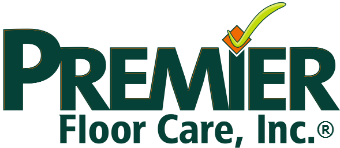
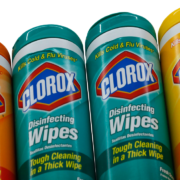
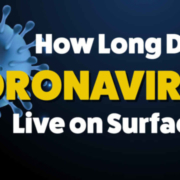

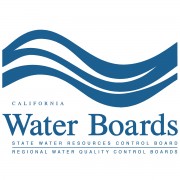
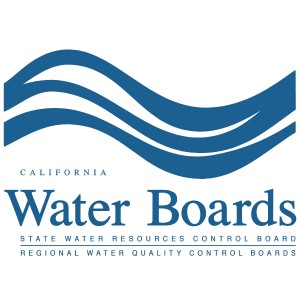
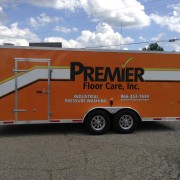
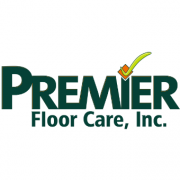


Follow Us